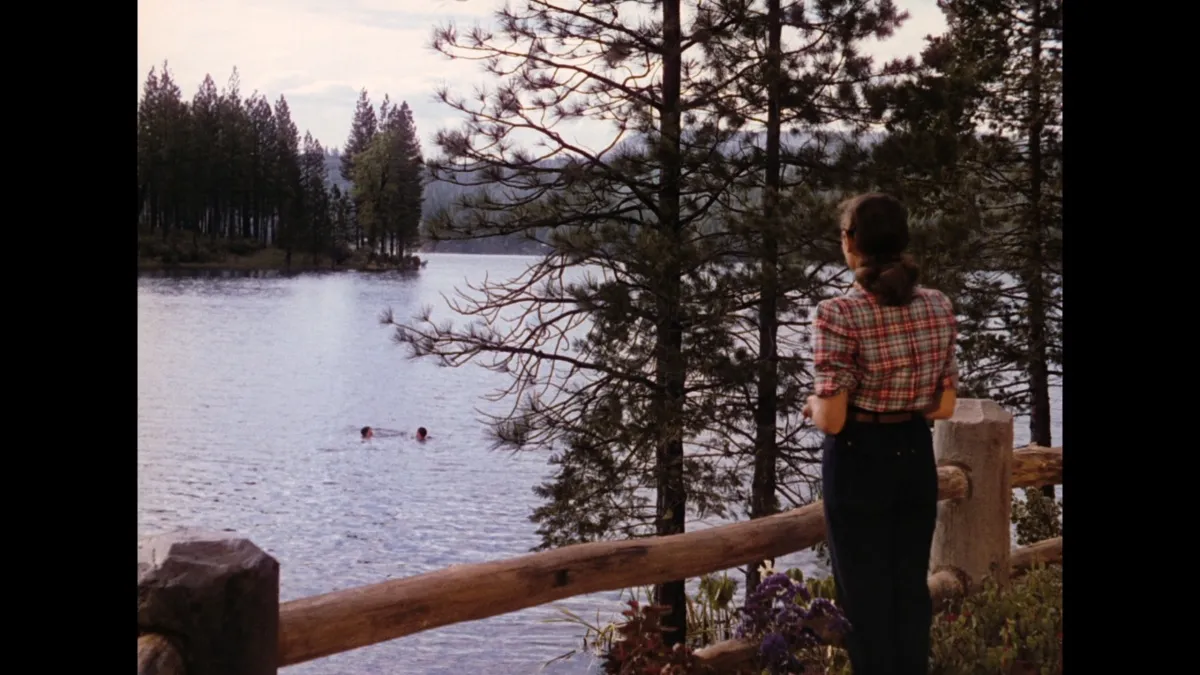Leave Her to Heaven (1945) is a film classified by IMDb as a drama/thriller and it does not fall short of displaying the qualities of this genre beautifully. The film stands as a great example of cinematic storytelling, where every frame is crafted to evoke a blend of beauty and tension. Through its stunning cinematography, the film paints a portrait of 1940s America, juxtaposing the serene landscapes with the ominous undercurrents of jealousy and obsession. Performances are delivered with a subtle intensity, each actor bringing depth to their characters, particularly Gene Tierney’s mesmerizing portrayal of Ellen Berent. Amidst it all, the mise-en-scène meticulously constructs a world where every detail contributes to the unfolding drama, ensuring Leave Her to Heaven is not just a film, but an immersive experience in visual storytelling.
Figure 1 depicts a close-up shot of Gene Tierney’s character, Ellen, the protagonist of the film. She is portrayed with a focused, intense gaze, which is characteristic of her possessive and manipulative nature in the story. The lighting in this frame is high-key, yet casting striking shadows on Tierney’s face, enhancing the mysterious and somewhat sinister atmosphere of the film noir genre. The composition of the shot draws attention to Tierney’s facial expression, emphasizing her inner turmoil and complex emotions, hinting at the psychological depth of her character.

Figure 2 captures a medium shot of Ellen and her husband, Richard Harland, played by Cornel Wilde, engaged in a tense confrontation. Ellen’s expression is desperate and calculating, while Richard appears perplexed and distressed. The use of framing in this shot creates a sense of claustrophobia, as the characters are positioned close to each other, heightening the dramatic tension between them. The mise-en-scène, including the dimly lit room and the somber color palette, reinforces the film noir aesthetic, evoking a sense of foreboding and unease.

As shown in Figure 3, this frame features a long shot of Ellen standing alone by the edge of a lake, gazing into the distance. The vast expanse of the landscape surrounding her reflects her isolation and inner turmoil. She is reminded of how emotionally distant she is from others and is bothered by this. Symbolically, the tranquil lake juxtaposed with Ellen’s troubled demeanor suggests the contrast between external appearances and internal conflict, a recurring theme in film noir narratives.
These frames from Leave Her to Heaven showcase the film’s strong use of visual storytelling techniques, including lighting, composition, and symbolism, to evoke mood and enhance the narrative depth of the story.
Leave Her to Heaven (Spine #1020) is available from The Criterion Collection.
Author Biography
My name is Stella Sosa Wallace. I am an undergraduate student at the University of North Carolina Wilmington. I am a film studies major with a minor in digital art. I plan to pursue a career in film production, and I have a wide variety of interests and hobbies.





































